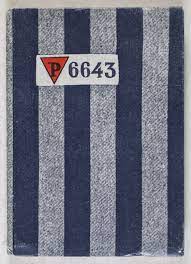We Were in Auschwitz
by Janusz Nel Siedlecki, Krystyn Olszewski, and Tadeusz Borowski. 1946
Reviewed by Jan Peczkis
The Many Victims of Extermination Camp Auschwitz and the Many Ways of Dying There

This book was written by Polish survivors of Auschwitz immediately after the war. For this reason, it is free of later accretions, including the customary overemphasis on the Jewish experience in the memory of WWII.
AUSCHWITZ AN ANNIHILATION CAMP FOR ALL: WHETHER DEATH CAME QUICKLY OR SLOWLY
Auschwitz is usually framed as an extermination camp for Jews but not for others. In actuality, it was an extermination camp, for all those sent there, from the very beginning, as was inherent with the very German definition of the camp! Siedlecki et al. specify the definition: “Vernichtungslager–Extermination camp. The official designation of Auschwitz.” (p. 194).
He adds, “Oswiecim–the famous KL Auschwitz. The German concentration camp near the little town of Oswiecim, which lies about forty kilometers west of Krakow on Poland land grafted on to the Reich and created at first as an extermination camp–Vernichtungslager–only for Poles.” (p. 5).
THE MANY WAYS OF DYING AT AUSCHWITZ
Death is death: It does not matter if it happens within hours of admission (as from gassing) or whether it happens within weeks or months of admission (from starvation, disease, or overwork).
Siedlecki et al. quote some recollections of an Auschwitz inmate, “In the first period of Auschwitz, the period of German victories on all fronts, only the odd individual survived the camp for more than a few weeks. Thousands perished almost instantly from bullets, phenol injections, the SS man’s and the Kapo’s club, died of cold or of heat, from the wind and the rain, from thirst and from contaminated water…to take one step out of line, to drop a spade, meant to perish under the club.” (p. 34).
Poles were punished for the slightest infraction, which soon led to their death. Siedlecki at al comment, “At the beginning of Auschwitz the life of a man in the penal company did not last longer than one month.” (p. 13).
INMATES KEPT ALIVE ONLY FOR GERMAN UTILITARIAN ENDS
Inmates who got sick and no longer could work were put to death. Siedlecki et al. describe some diseases that effectively were death sentences, “Fleck–spotted typhus, the third classic Auschwitz sickness. Until 4 April 1943, all those sick with fleck went, without exception, to the gas chamber.” (p. 190). The authors add, “Phlegmon–Intramuscular boil, the other classic Auschwitz sickness, for many years, like Durchfall [diarrhea, dysentery], it sentenced people to the gas chamber.” (p. 192).
German medical care was a sham, according to Siedlecki et al, “There was a hospital in the camp. Thousands died on lice-filled straw mattresses in there, went to the ‘needle’ or to the gas.” (p. 34).
ARRIVING POLES AND NOT ONLY ARRIVING JEWS WERE GASSED AT AUSCHWITZ
Nowadays, only Jews are remembered for having been gassed at Auschwitz. In actuality, Jews were not the only ones gassed at Auschwitz. Poles were too. Siedlecki writes, “And though the Germans stressed the difference between the Aryans and Jews very strongly, one must not assume that a quick ‘humanitarian’ death was an exclusive Jewish privilege. Polish transports also met their end in the gas chambers. I know the fate of a certain transport from the Lublin area, around one and a half thousand people, that arrived and perished one dark winter night (1942-43).” (p. 14).
PACKAGES FOR SOME OF THE INMATES
Poles at Auschwitz were sometimes allowed packages from the outside, while Jews were not. However, the Russians, and inmates of some other nationalities, did not get packages either. (p. 84).

